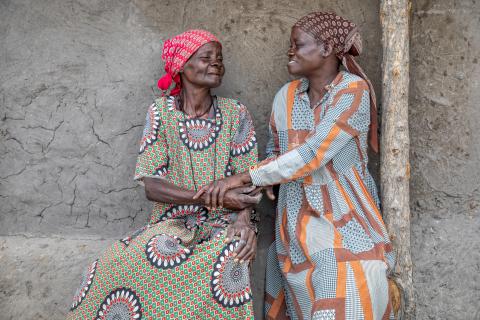The elderly: A forgotten group in humanitarian crises?
This is a summary of the following paper: van Boetzelaer E, Brown J, Vaid S et al. (2023) Elderly people in humanitarian crises, a forgotten population: A call for action. PLOS Global Public Health, 3, 7, e0002142. https://journals.plos.org/globalpublichealth/article?id=10.1371/journal.pgph.0002142
This short opinion paper raises important questions about the increasing global elderly population, as many countries shift towards aging populations.
"The proportion of the population aged 50 and over in fragile countries, where conflict and disasters are more likely to cause greatest harm, is expected to rise from 12.3% (219.9 million) in 2020 to 19.2% (586.3 million) in 2050."
The authors highlight the views of the United Nations High Commissioner for Refugees, which has stated that trauma, chronic undernutrition, and disease exposure will create a greater toll on 'older people', with adverse age-related challenges likely to occur earlier in crisis-affected populations. We may therefore need to move beyond defining people by age - which might not adequately capture a person's morbidity and mortality risk.
One area where the elderly are particularly at risk is when climate emergencies occur. Acute shocks (such as heatwaves, cold snaps, and droughts) may exacerbate pre-existing health conditions. The same conditions may also limit mobility during crises that require relocation (e.g. flooding). Elderly people are also more likely to be dependent on social and financial support networks and healthcare systems, creating further risks if these important lifelines become disrupted during an emergency.
Despite this group being more vulnerable in general (compared to younger adults), the authors note that 'elderly people' are not a homogenous group and different members of this population will have a blend of risk multipliers and mitigators. As well as biological age, which affects all disease processes and health stressors, additional vulnerabilities arise from female gender, being widowed, increased exposure to trauma (over time), prior mental health problems (worsened by social isolation), low income, poor education, and rural residency.
Guidance does exist on age-inclusive humanitarian assistance - yet this group is rarely included in the design, implementation, and evaluation stages of humanitarian interventions. Elderly voices remain unheard and, as a result, there is a lack of data from needs assessments as to how responses can meet and are meeting the requirements of this group. The authors highlight shelter provision, water supply, toilets, and food distribution points as examples of areas where elderly accessibility is not often prioritised.
From an ethical standpoint, providing humanitarian assistance for all remains a basic human right. The focus on younger groups seems rational through a productivity lens (i.e. these groups are or will be economically productive, providing a better return for humanitarian investment), but deprioritises those who cannot play an active role in the workforce. Even though elderly people possess unique skills and experience from living through previous disasters - experiences that are useful for societies in these areas - their voices go unheard, and their needs are removed from the equation.
The proposed solution to this is to include elderly people in all phases of the humanitarian programme cycle. The authors note that this will require deliberate and structured efforts, which in turn requires more work from the aid community. If interventions are also expanded to this group, this will inevitably require more funding. Yet the payoff is in access to elderly people's previously untapped knowledge and insight, which can result in more appropriate and effective response plans.
Above all, this approach has a strong ethical foundation, given that the provision of appropriate and accessible humanitarian assistance for all is a basic human right.


